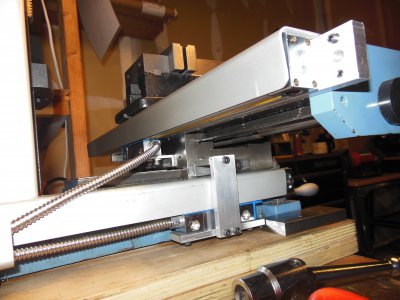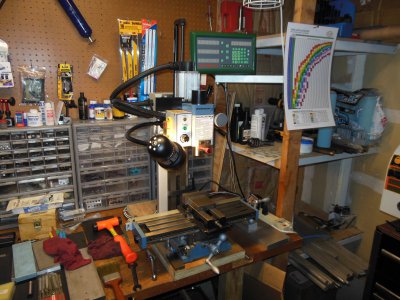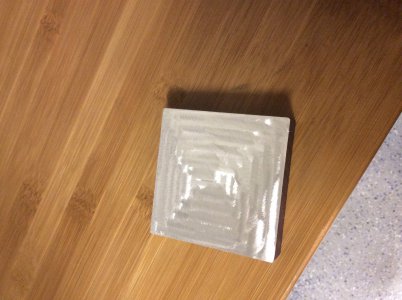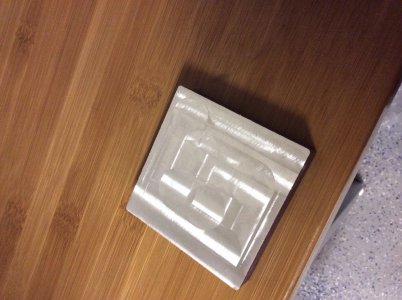- Joined
- Mar 21, 2013
- Messages
- 4,067
To your original/latest question:
It's best to remove the saddle and table to drill and tap it. And it's not hard to do.
Remove the Y-axis handle and dial, being careful not to loose the little tension spring under the dial. I suggest covering it (dial) with a rag to keep it from shooting off to who-knows-where.
Then remove the support plate for the Y-axis screw by removing the two screws on either side of the screw.
Remove the leadscrew from it's brass nut by unscrewing it all the way out (towards you).
Loosen the gibbs screws on the right side of the saddle, and pull the saddle towards you/front of the machine so that you can see the nut under the saddle. Take a long allen wrench (I don't remember the size) and loosen the setscrew for the nut. It should just fall out onto the board you have under the mill.
Get a firm grip on the underside of the table, on either side of the saddle, and pull towards you. The gibbs will likely fall out, but that's OK, you can pick it up after you gently place the saddle/table somewhere where it won't fall and squish your foot.
Take the opportunity to check the ways, check the gibbs for flatness, even stone it maybe.
You have smaller scales that I, so you shouldn't have near the issues I had.
Reverse the process to re-assemble. Not that hard.
Here's a pic of my LMS and the back of the saddle. Kinda crowded, but I managed. Measure everything before you remove the saddle!
Bill


It's best to remove the saddle and table to drill and tap it. And it's not hard to do.
Remove the Y-axis handle and dial, being careful not to loose the little tension spring under the dial. I suggest covering it (dial) with a rag to keep it from shooting off to who-knows-where.
Then remove the support plate for the Y-axis screw by removing the two screws on either side of the screw.
Remove the leadscrew from it's brass nut by unscrewing it all the way out (towards you).
Loosen the gibbs screws on the right side of the saddle, and pull the saddle towards you/front of the machine so that you can see the nut under the saddle. Take a long allen wrench (I don't remember the size) and loosen the setscrew for the nut. It should just fall out onto the board you have under the mill.
Get a firm grip on the underside of the table, on either side of the saddle, and pull towards you. The gibbs will likely fall out, but that's OK, you can pick it up after you gently place the saddle/table somewhere where it won't fall and squish your foot.
Take the opportunity to check the ways, check the gibbs for flatness, even stone it maybe.
You have smaller scales that I, so you shouldn't have near the issues I had.
Reverse the process to re-assemble. Not that hard.
Here's a pic of my LMS and the back of the saddle. Kinda crowded, but I managed. Measure everything before you remove the saddle!
Bill





